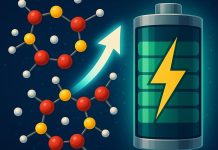
Fuel cells are powerful devices that can turn electricity into clean hydrogen fuel by splitting water molecules.
They can also work in reverse, consuming hydrogen to produce electricity without harmful emissions.
This makes them an exciting alternative to traditional combustion engines.
One crucial part of making fuel cells efficient is maintaining the right temperature. Typically, high temperatures are needed for the best energy conversion.
But just like a leaky pipe, fuel cells can lose efficiency, especially when temperatures get too high.
A recent study led by scientists from the Lawrence Livermore National Laboratory (LLNL) Quantum Simulation Group uncovered why this happens.
The researchers found that when fuel cells operate above 600 Kelvin (about 327°C), their efficiency starts to drop. This is due to increased electrical leakage within the fuel cell’s main material—barium zirconate, a type of solid-oxide electrolyte.
According to Shenli Zhang, a physicist at LLNL and the study’s first author, traditional models for fuel cells often overlook how heat affects the tiny vibrations inside the material.
However, their quantum mechanics simulations showed that these vibrations are a big part of the problem.
As the temperature rises, the atomic structure of barium zirconate starts to vibrate more intensely. These vibrations push negatively charged electrons closer to the edge of escaping from their atoms.
When electrons escape, they leave behind “holes,” or spaces that carry positive charge. Zhang explains that these escaped electrons and holes don’t help produce energy; instead, they waste the input energy, reducing the overall efficiency of the fuel cell.
In their study, the researchers discovered that at higher temperatures, there are four times more of these energy-wasting holes in the material. This means a lot of potential energy is being lost, simply because the material can’t hold onto its electrons.
To better understand this leakage, the LLNL team developed a simulation protocol that measures how many electrons and holes appear as temperatures rise.
This model allows scientists to predict energy losses and consider ways to fix them. Joel Varley, another researcher involved in the project, said these findings could help design better materials or adjust operating temperatures to prevent this kind of energy loss.
Looking forward, the research team plans to expand their work to study other materials used in fuel cells.
They also hope to speed up their simulations with machine learning, making it easier to design fuel cells that waste less energy and are even more efficient.
These improvements could bring us one step closer to cleaner, more powerful fuel cell technologies for everything from cars to power plants.
Source: LLNL.



